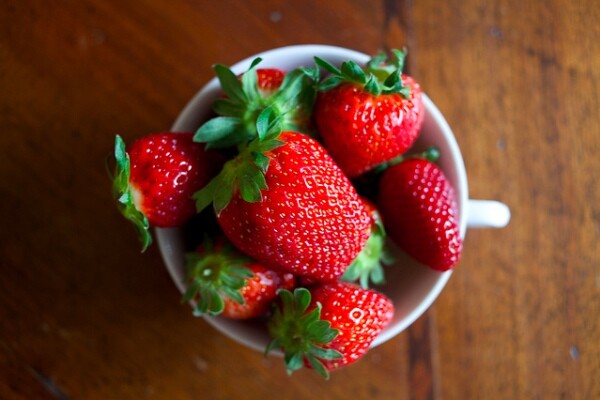The Great California Strawberry Lawsuit

Despite their ubiquity in grocery stores and farmers' markets, strawberries are not as easy to grow as one might think. But one place that has mastered the art of strawberry cultivation is the breeding program at UC Davis. Since the 1930s, they've been developing methods to make the best-tasting, ideally-colored, and perfectly-sized strawberries. In fact, most of the strawberries we consume have roots (so to speak) in breeds that were born from the program.
Because of that success, there's a lot of money involved. And because of that money, there's one heck of a legal battle going on.
Let's go back for a second: For the past thirty years, the program has been overseen by Douglas Shaw and Kirk Larson. In 2012, the pair announced they were leaving the university. Reasons for their departure are murky, ranging from simple retirement to conspiratorial ramblings that they were going to use university-tested methods to fund their own private enterprise. NPR claims Shaw simply didn't like the direction the university was going:
Shaw wrote that he is leaving because the university no longer cares about the kind of practical, commercially valuable breeding that he does. "We do not fit here any longer," he wrote in the e-mail.
Whatever the case, they were leaving. But it's not as simple as giving your two weeks and calling it a day. They were giving up control of a huge money-maker, both for UC Davis and the California strawberry growers using the university's methods to perfect their own crops.
"[The program] has been profitable for everyone," said Helene Dillard, Dean of the College of Agriculture and Environmental Sciences at UC Davis. "And it's been profitable for the farmers, because these varieties are good. Lots of people want to buy those plants and make profit off the berries."
How much money are we talking about here? The value of strawberry crops in California is about $2.6 billion a year. Seeing as UC Davis' methods are also used by Florida farmers, as well as international growers, it's tough to ballpark a good number other than "a lot."
UC Davis, meanwhile, has earned quite a bit of money themselves. Jacob Appelsmith, Chief Campus Council at UC Davis, estimates that the program's budget is between $1.5 million and $2 million per year. NPR reports that UC Davis' earnings totaled $50 million between 2004 and 2013. Which all means they'd average about $3 million in profit a year from this program alone.
The money coming in is partially through royalties from their patents and partially from research grants provided by outside interests, who, in turn, use methods developed by the program. The California Strawberry Commission is one of those interests. They had been giving UC Davis roughly $350,000 a year in research grants, until 2012 when they were told their funds would no longer be needed because the two growers were leaving.
The Commission was not pleased:
"We got a phone call from the University of California," says Carolyn O'Donnell, communications director at the California Strawberry Commission, an industry group that has helped to fund the UC Davis breeding program. "They said that we no longer needed to send them money because they were going to discontinue the [breeding] program" when the current breeders leave.
So, they filed a lawsuit against UC Davis.
"The legal theory they've used is that under these research grants they've given the university, they now have some sort of an ownership right to the program," said Appelsmith. "If the court agreed, they could stop the university from licensing out the breeder rights to these breeders or anyone else."
With the lawsuit still in a holding pattern, UC Davis filed a counter-complaint on October 31st regarding control of the patents:
UC's lawsuit seeks a ruling declaring that the university is the sole owner of the germplasm and that the Strawberry Commission isn't entitled to a copy. The university is also seeking a declaration that it alone controls patents on nine strawberry varieties developed over the years by the two departing scientists.
It's all quite contentious and convoluted. But at its core, the legal maneuverings are about the continuation of the program. The Commission has stated that the suit is simply a way to get UC Davis to continue the program after the two breeders leave. Where it gets weird is that the university has always claimed they intend to. Dillard believes this fight is just one big misunderstanding.
"[The breeders] announced they were going to retire almost two years ago," said Dillard. "But the reality is they just officially left last week. We can't move on these things until the individuals have done what they're going to do."
According to Dillard, UC Davis is in the process of interviewing candidates to fill the position, and are close to making an offer to fill the first of two vacancies. Whether or not this will be enough to satisfy the Commission to withdraw the lawsuit remains to be seen. For instance, what happens if they don't like the hire?
"The hope is they'll understand the new breeder might do something differently," said Dillard. "But that's what you want. You want new blood. You want new people coming in and doing it their own way, to come up with the very best products for California."
Appelsmith is less optimistic. "I don't know why the Commission is continuing to pursue the lawsuit," he said. "And I don't know what would trigger them to drop it."


